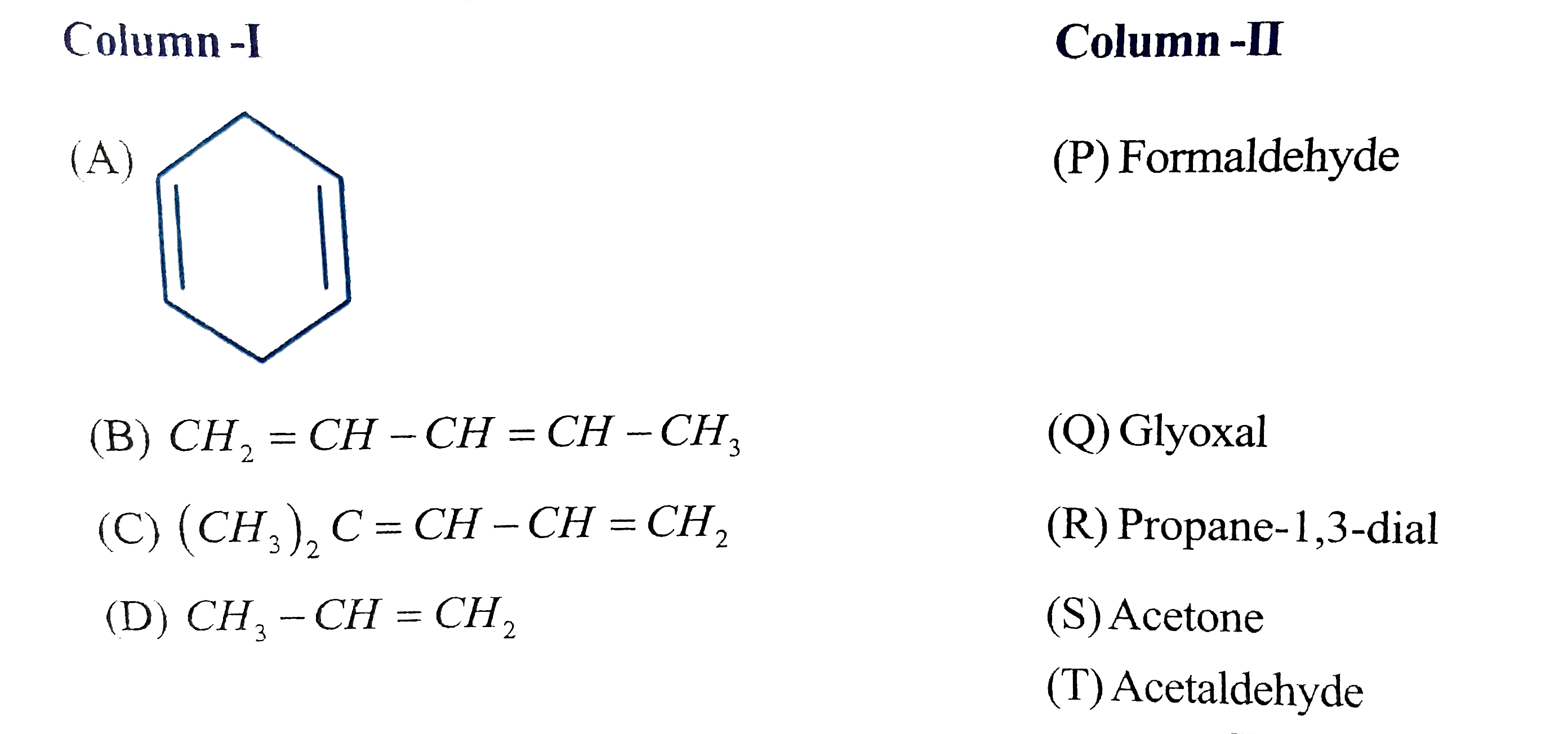What happens when the following alkenes are subjected to reductive ozonolysis.
(i) Propone,
(ii) 1-Butene,
(iii) Isobutylene.
(i) Propone

(ii) 1 -Butene:

(iii) Isobutyylene

Topper's Solved these Questions
- CARBONYL COMPOUNDS AND CARBOXYLIC ACIDSBOOK - PREMIERS PUBLISHERSCHAPTER - CARBONYL COMPOUNDS AND CARBOXYLIC ACIDSEXERCISE - EVALUTION (TEXTBOOK QUESTIONS & ANSWERS) (CHOOSE THE CORRECT ANSWER)
25 Videos
- CARBONYL COMPOUNDS AND CARBOXYLIC ACIDSBOOK - PREMIERS PUBLISHERSCHAPTER - CARBONYL COMPOUNDS AND CARBOXYLIC ACIDSEXERCISE - EVALUTION (TEXTBOOK QUESTIONS & ANSWERS) (ANSWER THE FOLLOWING QUESTIONS)
16 Videos
- BIOMOLECULESBOOK - PREMIERS PUBLISHERSCHAPTER - BIOMOLECULESEXERCISE - OTHER IMPORTANT QUESTIONS& ANSWERS (Answer the following questions)
66 Videos
- CHEMICAL KINETICS BOOK - PREMIERS PUBLISHERSCHAPTER - CHEMICAL KINETICS EXERCISE - OTHER IMPORTANT QUESTIONS & ANSWERS (II. Answer the following questions.)
52 Videos
Similar Questions
What happens when chlorobenzene is subjected to hydrolysis?
View SolutionWhat happens when
chlorobenzene is subjected to hydrolysis.
View SolutionWhat happens when mercuric oxide is subjected to heating?
View SolutionWhat happens when acidulated water is subjected to electrolysis ?
View SolutionWhat happens when potassium nitrate is subjected to heating ?
View SolutionWhat happens when ethyl isocyanide undergoes reduction?
View SolutionWhat happens when ethyl isocyanide undergoes reduction?
View SolutionPredict the products when the following are subjected to ozonolysis ?
(i) CH3CH=CH2, (ii) CH3CH=CHCH3
(iii) (CH3)2.
View SolutionMatch each of the compound in column I with the product of reductive ozonolysis in column-II

View SolutionMatch each of the compound in column I with the product of reductive ozonolysis in column-II

View Solution
